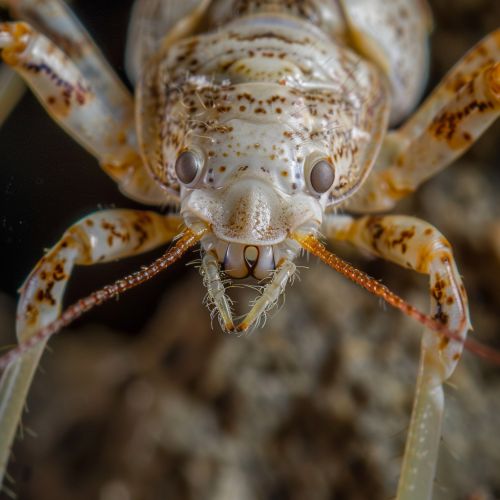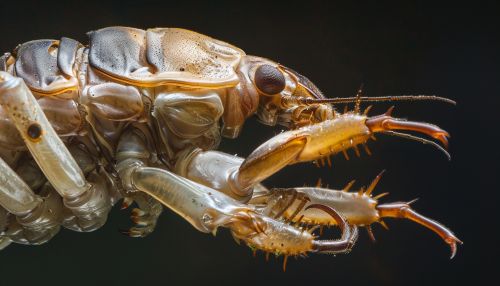Arthropod
Classification and Evolution
Arthropods (from Greek ἄρθρον arthron, "joint" and πούς pous, "foot") are an invertebrate animal phylum with more than a million described species, making up more than 80% of all known living animal species. They are characterized by their jointed limbs and cuticle made of chitin, often mineralised with calcium carbonate. The evolutionary ancestry of arthropods dates back to the Cambrian period and is generally regarded as monophyletic. The first arthropods were marine, but they have since colonized all environments on Earth.


Morphology
Arthropods are typified by their rigid exoskeleton and jointed appendages. Their body plan consists of repeated segments, each with a pair of appendages. The rigid cuticle inhibits growth, so arthropods replace it periodically by moulting. Their versatility has enabled them to become the most species-rich members of all ecological guilds in most environments.
Physiology
The internal physiology of arthropods is marked by a hemocoel filled with hemolymph, which contains oxygen-carrying pigment hemocyanin. Arthropods have a highly developed sensory system, with compound eyes, olfaction and pheromone sensing. Their nervous system is "ladder-like", with paired ventral nerve cords running through all segments and forming paired ganglia in each segment.
Reproduction and Development
Arthropods use a wide range of reproductive strategies, from asexual reproduction to complex sexual behaviours. Most species have male and female sexes, but some are hermaphroditic or parthenogenetic. They have a wide range of embryonic development strategies, and their growth and development are often closely tied with their environment.
Ecology
Arthropods play many important roles in their ecosystems. They are found in nearly every habitat on Earth and occupy a wide range of ecological niches. They can be herbivores, predators, parasites, or detritivores, and many species are also important pollinators.
Human Interaction
Arthropods have many interactions with humans. They are a major source of food for people, and they also have important roles in pollination, decomposition, and soil formation. However, they can also be pests, transmitting diseases or damaging crops and infrastructure.
